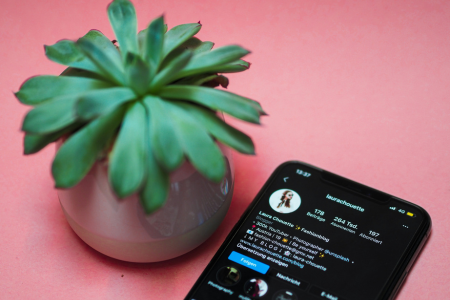How to Create a Healthy Foundation for Your Influencer Efforts
Building a scalable, long-term strategy for influencer engagement takes commitment. Here are our top tips!
I’m going to say something controversial: investing in a one-off, single month paid influencer campaign is worse for your business then not investing at all.
You are going to spend weeks on partner discovery and a good chunk of change; set up creator guidelines and structures; make some mistakes; learn a lot; and then turn it all off. What you’re not going to do is realize the upside of influencer marketing.
You will not create brand ambassadors. You will not experience that warm, sustained flood of positive chatter about your business, and you will not (typically) turn a profit on your investment.
So, should you throw in the towel right now without dipping your toes into the pool that is influencer marketing? You’ve heard the water is warm. We’re talking the all-inclusive resort quality “vacation of your dreams” pool. Of course not. But you do need to understand that in the influencer space, you are investing in people, not outputs.
Give creators and their followers a fighting chance. If new customer acquisition is a driving KPI for your business, it’s best practice that you activate at least some talent within your campaign that is net new. It takes time to cultivate this talent and accustom their communities to your message.
When was the last time you purchased a new vacuum after a single recommendation? Or changed your makeup routine after watching one video tutorial? The Rule of 7 — how it takes seven touchpoints for your marketing message to cut through — still applies in the influencer space.
We are currently hiring to add to our influencer team, and so I’ve been doing a lot of interviewing. A few questions I always ask potential candidates looking to join our team are:
- When was the last time you bought something that an influencer recommended?
- What was it about that content that convinced you to buy?
- Were you happy with your purchase?
Responses range, but they typically include some mention of the authenticity of the creator; how they’ve seen the creator post about the product before; and how that advocacy felt casual and genuine. One hundred percent of the time the candidates have been happy with their purchases. This type of consumer experience takes business commitment.
Businesses that are first-time buyers in the influencer space often have an assumption of how they want their campaign to go — demographics of whom they want to work with; what channels they’re using; and what they want them to say. That’s great — your agency partner will want to hear all these details within your intake call.
But expect your influencer campaign partner to push back on some of those assumptions. They might try to widen your demo, introduce new channels and discourage strict messaging. Your first month into partnership, you’ll likely reject many of these recommendations, and that’s okay — you’re new to the partnership and opportunity and that level of trust hasn’t been built yet.
At BrandCycle, we call the first month “the month of discovery.” We are learning how to communicate clearly together and figuring out what types of messaging resonates best with the creators’ individual audiences. By month two, your team is going to be more open to pressure testing initial campaign assumptions, which you cannot do if you’re only booking a one-off, single month campaign.
At a minimum, we recommend starting with a 3-month campaign with monthly deliverables. Your influencer agency partner should evaluate performance weekly and pivot strategies monthly. It’s unlikely that campaign parameters for month three are the same as month one, and that’s good — that’s what success looks like. This refinement creates a healthy foundation for your influencer efforts going forward.
In fact, we’ve found that businesses that organize their influencer efforts in this way can realize average campaign returns that are more than double the returns of single month investments.
Additionally, when you buy in bulk like this your influencer agency partner can oftentimes find efficiencies within the campaign process — product fulfillment, content review, promotion distribution, deliverable tracking and preferred communication style, which are unique to your business.
They can also find savings across creators’ rates, as creators appreciate the commitment to their businesses in the same way that you appreciate commitment to yours (this is especially important during peak holiday). Your team can also all be a bit more strategic — planning ahead for upcoming sales moments and product drops in a way that’s never rushed or taxing for influencers and your business alike.
If I have a smaller budget, does that mean that I cannot work with influencers? Your budget has to be meaningful enough to effectively measure the impact of the campaign, but that doesn’t mean you can’t work with influencers.
User generated content is one engagement avenue that’s great for more modest investment levels, or you might consider spending your budget differently than in a one-lump sum, i.e. spreading it out over a couple months.
A smaller budget is going to mean that you’ll be working with less talent overall or talent with a smaller reach, but that doesn’t mean you can’t activate the right talent that your budget allows.
I’m a marketing leader who fought long and hard with my CEO to secure an influencer test budget, do I have to go back and ask for even more? When you are negotiating test budgets with your business leaders, in addition to asking their primary and secondary KPIs for engaging with influencers, also ask the question, what does success look like at the end of this campaign?
Don’t walk away from that conversation without concrete, measurable outcomes. Share those outcomes with your influencer agency partner before the ink is dry on your statement of work. They’ll share them back with the talent and provide honest insight into the feasibility of the outcomes, and work with you to adjust expectations, if necessary.
Ultimately, your business and the influencer industry want the same thing — for influencers’ content to create a warm flood of positive chatter about your business. We want that content to turn followers into consumers and generate a beaucoup of sales.
Not only do we want this, but our industry has shown time and time again that this outcome is not only possible, but probable with sustained commitment within the space.
Jump on in — the water’s fine.
Recent Posts

Creators’ Guide to Making Money Online

Six Tips for Becoming an Influencer and Affiliate in 2024

